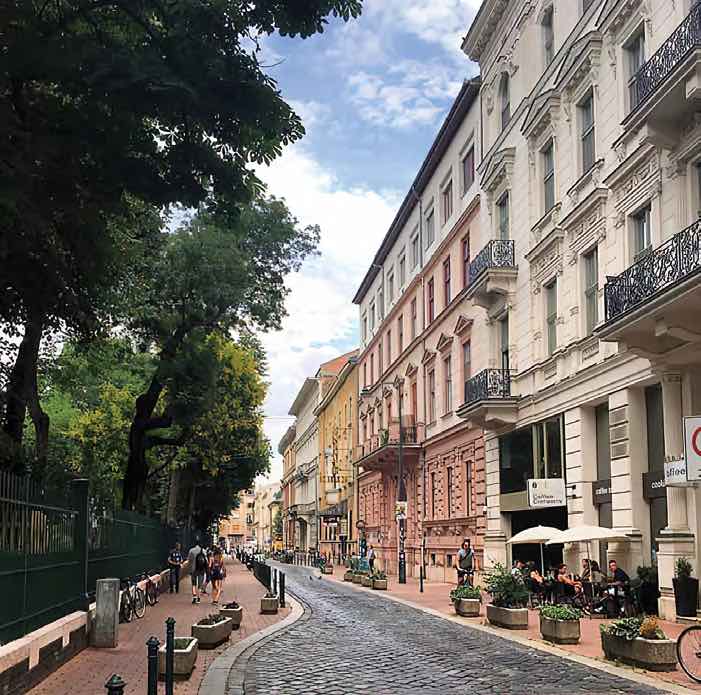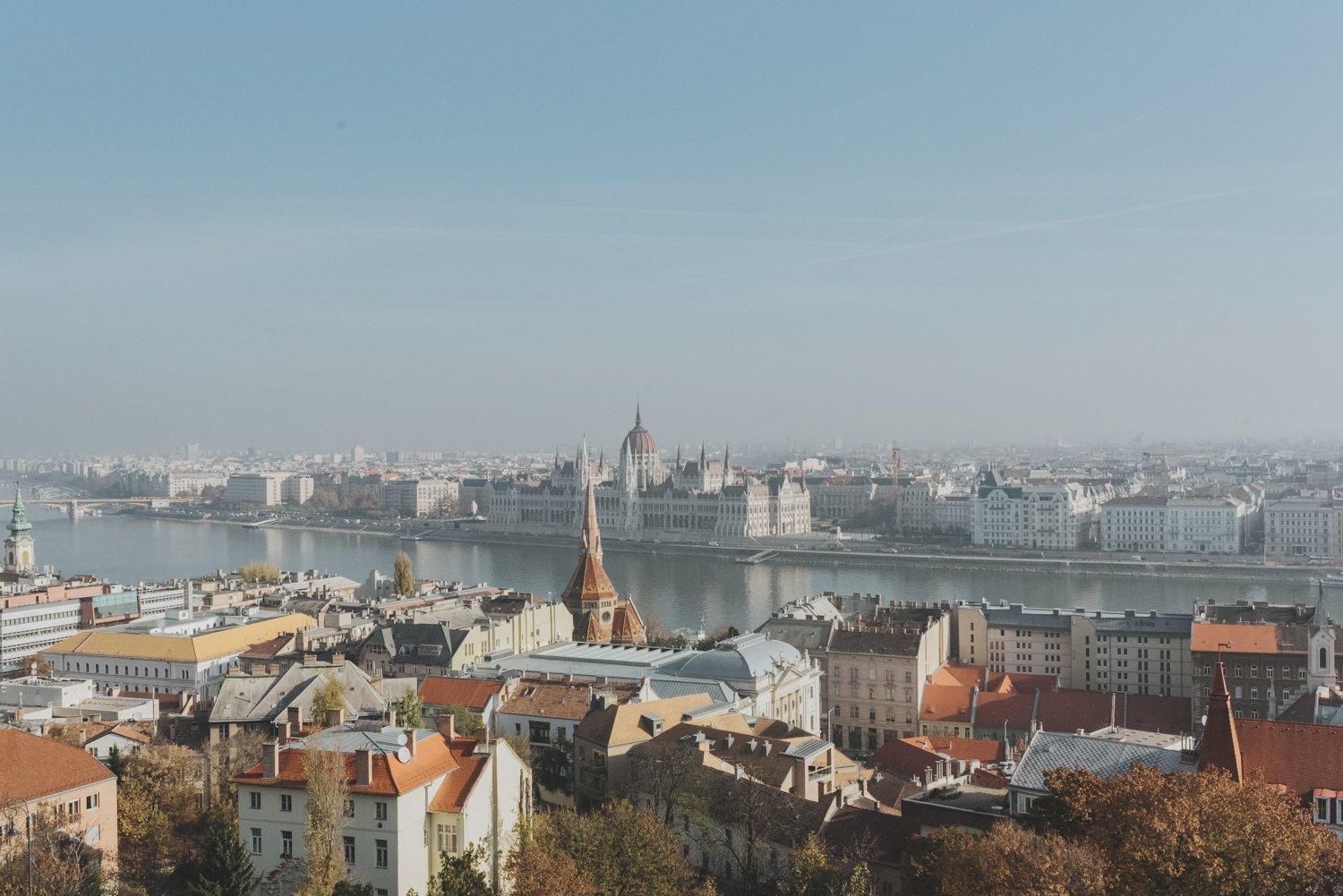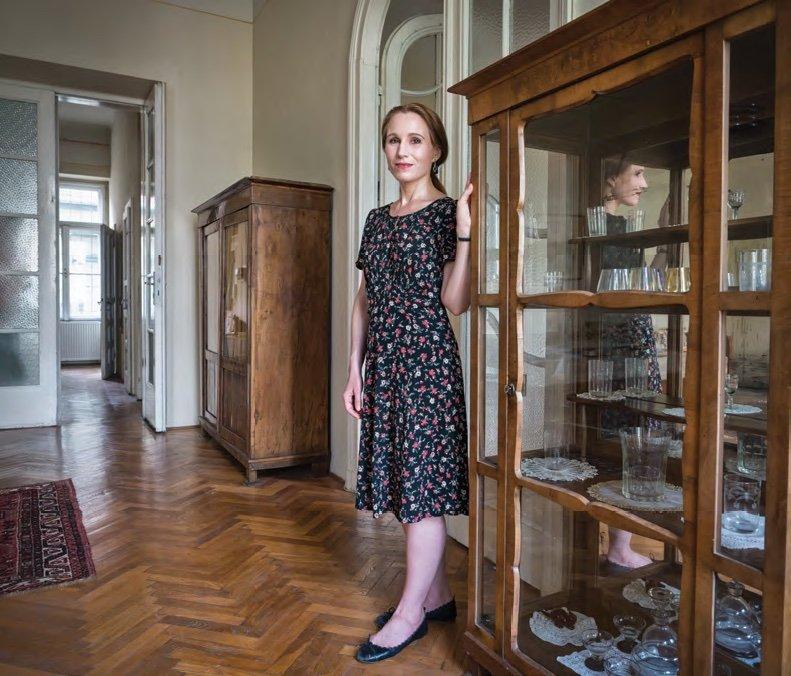Feature Image by Norbert Uzseka
“It’s beautiful. But it’s going to cost a fortune to renovate.”
My sister walked around the living room of the apartment in Budapest, looking up at the high ceiling, shaking her head at the cracked plaster and flaking paint. I remembered the last time the walls had been painted, when my grandfather was alive. He had painted them himself, climbing up on a ladder to finish the ceiling. He had left the shape of a rabbit on that ceiling just for me, painting over it only at the very end. That must have been when I was about five, not long before my family emigrated to the United States, leaving my grandparents and the apartment behind.
Now here I was, back again, many years later. The apartment had not changed much in that time, and it desperately needed renovating. I didn’t happen to have a fortune, but I had some savings. My first three novels, a historical trilogy, had sold well enough that I had money in the bank, which seemed like a miracle to me after years of scraping by on fellowships and student loans in graduate school. I had enough to make the apartment habitable, and perhaps, with time and imagination, I could once again transform it into the enchanted place it had been to me as a child.
The first thing you should know about the apartment in Budapest is that it’s on the second floor of a palace—called the Hadik-Barkóczy Palace, located in a historical district on the Pest side of the Danube. It was built for Count Endre Hadik-Barkóczy in 1912. In those days, noble families had town palaces in addition to their country estates, and one of the fashionable places to build them was around the Hungarian National Museum, an elegant neoclassical building with a surrounding park where my grandmother used to take me for walks when I was a child. The park was right across the street from the apartment—you could see its ancient linden trees from the front windows. Once, by one of its winding paths, my grandfather found a baby pigeon fallen from its nest. He took it home and fed it himself. It grew until it could fly around the apartment, perching on the furniture. My grandfather built a cage for it covered in old pantyhose and put the cage on the windowsill so the pigeon could get used to being outdoors. Eventually it was strong enough to tear a hole in the pantyhose and fly back to the park. But my grandfather said the pigeon remembered him—when he took his daily walks it would follow him, hopping from branch to branch.

My grandparents bought the apartment after the Second World War, in 1950. By then, the palace had been converted into an apartment building. At the front, the apartment had two large rooms that must once have been a double salon, since they were still connected by an elegant, arching glass door. The tall windows let in the golden sunlight of Budapest. At the back was a kitchen and pantry where my grandmother produced the best soups and stews and preserves I have ever tasted. She had been trained as an artist, and she brought an artistic sensibility to everything she touched. She could paint flowers and landscapes, sew and embroider and make yards of crocheted lace, reupholster her own furniture. I admired how she could do so much herself, not realizing that she had little choice—it was a time of hardship and poverty in Hungary. She had grown up in a privileged and relatively prosperous family, but in those difficult postwar years, she learned to make do. She cooked magnificent meals on a small gas stove that had to be lit with matches. The furniture consisted of a few valuable, though battered, antiques supplemented by cheap but convenient modern pieces. The walls were decorated with her own paintings—watercolors of flowers and landscapes, some portraits in oils. The apartment was heated by two ceramic stoves in the corners of the living room and bedroom. My mother would go down with a bucket and bring up coal from the apartment building cellars. Clothes were washed by hand and dried on a rack that hung over the claw-foot iron tub. The rack could be winched up and down, hung with clothes and then raised for maximum air circulation.
As I child, I didn’t think about these difficulties. I was absorbed in the things children care about, such as my pet hamster, which looked like a small bun. One day, cleaning behind the sofa, my grandmother discovered a nest of yarn and fabric scraps that it had assembled whenever I let it out of its box to scamper around the apartment. I still remember the lights on the Christmas tree, which were real candles that clipped on the branches. My grandfather kept a bucket by the tree just in case a branch caught fire, but to me they looked magical, like stars. It must have been a difficult life for my mother as well, living with her parents again, trying to raise her daughter after a divorce. She had spent a year in the United States on a research fellowship, and that was where she saw her future—it must have taken courage for her to leave her parents and country for a new land. I grew up in the United States, on Campbell’s soup and American television, although we held on to some Hungarian customs. Each Christmas, we hung foil-wrapped candy called szaloncukor on the tree, and my mother still made some of the dishes my grandmother had produced in the apartment kitchen—chicken paprikás and cucumber salad and sour cherry strudel. By the time I returned to Hungary again, I was a teenager. My grandparents were older and less able to keep up with repairs, although my grandmother still crocheted yards of lace. I went back when I could, but I was busy with college and then graduate school—I didn’t have the time or money to visit Budapest. Eventually, my grandparents grew too old to live in the apartment alone, and it was left empty.

By the time I had that conversation with my sister, my grandparents had passed away and the apartment had been empty for many years. It was in desperate need of renovation. The window frames, more than a hundred years old, had rotted and the windows no longer closed properly. The damp that got in warped the parquet floors. Years of soot turned the walls my grandfather had painted dim and dingy. The electrical system was no longer safe—it could cause a fire behind the plaster. I had been visiting more regularly now that I was a university lecturer with summers off. It was like camping in a palace—I lit the old stove with matches, dried my clothes on a rack, and slept on one of the ancient beds, whose deleterious effects on my back had to be countered with daily yoga. And yet, the apartment itself was still beautiful. The ceilings still soared, the walls still looked out at the park around the National Museum, and in the morning I could hear birds singing in the linden trees. My grandmother’s paintings still hung on the walls. It was still the magical place of my childhood. I checked my savings, sent up a brief prayer to whichever saint is in charge of renovations, and called an interior designer.
That was last August. I walked through the apartment with the designer and architect, talked about what I thought needed to be done, and then left—confident that I would be back soon. The semester was starting and I had classes to teach, but surely I would be able to return for fall break? Or if not then, for the winter break in January? But pandemic restrictions and border closures made it impossible to travel. I had to renovate an apartment by emails and text messages sent back and forth across the Atlantic. I picked out tiles and paint colors based on photographs the designer sent me. I approved plans for the bathroom, kitchen, and laundry room without being able to see the rooms themselves. I created a folder on my phone for images, plans, ideas. Slowly, over the winter, a new electrical system was put in. The walls were refinished and painted. The parquet was sanded and varnished. The most difficult and expensive task was replacing the windows—because the apartment is in a historical district, the new windows had to be the same color and style as the old ones. They had to be custom-made by a specialized window company. I felt both relief and triumph when I was told the new windows were in place. As I write this, a new kitchen is being installed, with a stove that will light when I turn the knob. I have seen it only in photographs.
In two weeks, I will be in Budapest. What will I find when I get there? The antique furniture is still there, although it will need to be refinished—several wardrobes, the sort you enter to get to Narnia; two tables; a few armchairs; a vitrine where my grandmother used to display her porcelain; and an Empire settee that I’m convinced is filled with real horsehair. The cheap modern furniture has been cleared out. I will replace it with solid pieces that complement the style of the antiques. I have already ordered a bed, a desk, a dining room table, and some chairs. There is no sofa, no rugs, no curtains. It will take a lot of work to turn the apartment back into what it once was and should be—a home. But in the morning, light will come through the tall windows, and I will hear the birds in the linden trees. Slowly, I will fill the apartment with books. I will put the lace my grandmother made on the tables, the pillows she embroidered in the armchairs. Her paintings will once again hang on the wall. And when I sit at my desk, writing stories, I will be able to look out at the park where I played as a child, never imagining the journey that would take me so far away and then bring me back again to my apartment in Budapest.


































